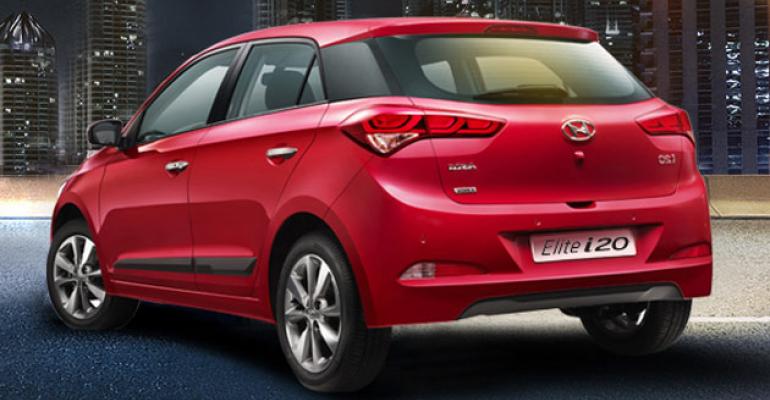MUMBAI – Hyundai India’s share of domestic sales and exports continues growing after 17 years in the country, a performance based on responsiveness to a changing market.
The automaker’s 10 brands combined claim 21.6% of the local market, second only to Maruti Suzuki, and it is India’s leading exporter with a 40% share of sales. It is utilizing nearly all of its annual 640,000-unit capacity, even during the slowdown of the past two years.
“We have strength and understanding in manufacturing desirable small hatchbacks like (the) i10 series and attractive sedans in (the) i20 series,” Vice President Rakesh Srivastava says. Both models’ engines are old, but their driving dynamics are so good that the upgraded Grand i10 and Elite i20 continue to sell.
The Elite i20 has been named Indian Car of the Year two consecutive years. “Winning two successive ICOTY Awards symbolizes our commitment to Indian customers by offering world-class standards in technology, design, quality and branding,” Managing Director and CEO Bo Shin Seo says.
After 15 years of dominating the markets, Hyundai’s pioneering Santro hatchback has just been retired. Unlike the i10 and i20, its older-generation engine diminished consumer interest. Hyundai has replaced it with the Xcent compact sedan targeted at younger buyers.
Hyundai’s product plans feature more than just the Xcent. It is investing Rs15 billion ($240 million) over the next 2-3 years in developing new models. Two-thirds of that total is committed to a compact SUV codenamed GS, based on the ix25 and meant to challenge Ford’s EcoSport and Renault’s Duster. An unnamed CUV is being developed using the Rs5 billion ($80 million) balance of the investment.
“We plan to be as strong and efficient in the compact segment as we have been in the spacious vehicles,” Srivastava says.
Hyundai has launched the Santa Fe premium SUV, which has seen only nominal sales because of high tariffs on fully assembled imports. But the automaker plans to assemble the Santa Fe in India, confident it can compete economically and efficiently.
Hyundai’s 2016 plans include a compact MPV that will compete against the Honda Mobilio, Maruti Suzuki Ertiga and Toyota Innova, but currently no resources have been allocated for it.
Domestic sales and exports during the financial year ending March 31, 2014, totalled 613,513 units, indicating capacity utilization of 96%. Hyundai expects sales and exports in the current fiscal year to surpass 700,000 units, well above installed capacity of 640,000. But rather than invest in additional capacity, Srivastava says, the automaker plans to re-engineer production processes and assign 50,000 units for export to other manufacturing sites in Southeast Asia.





